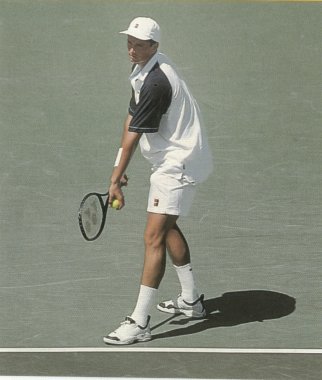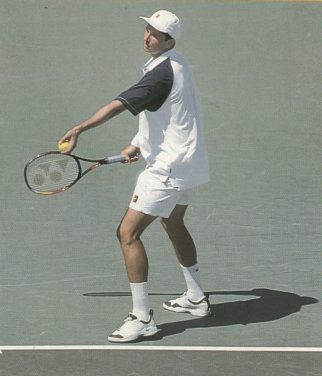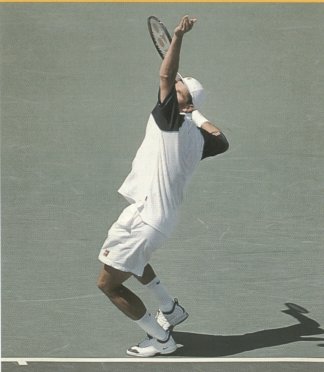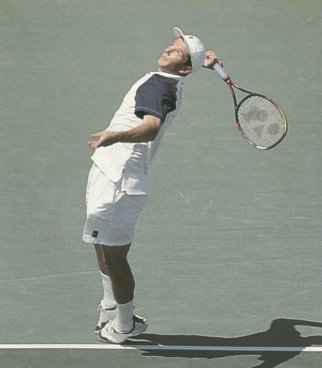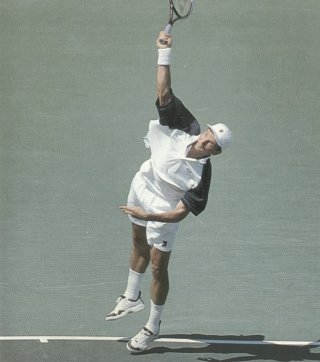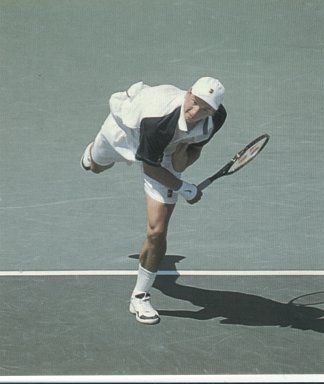THE SERVE
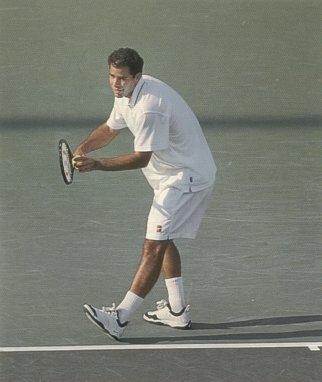
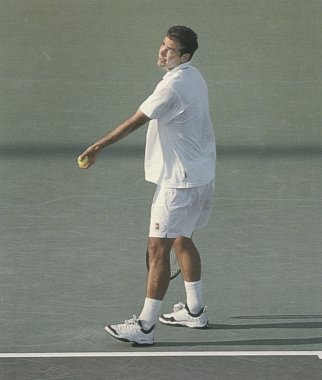
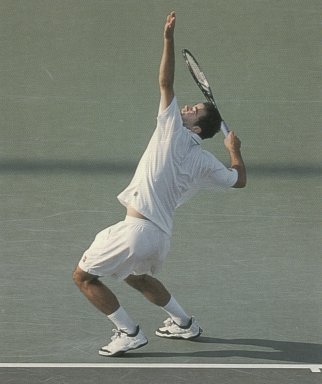
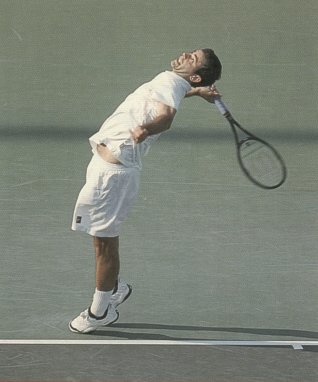
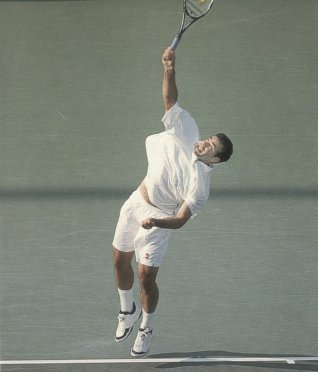
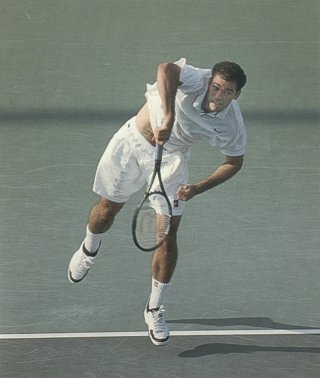

* Both players are in the starting position just after finishing their pre-serve ritual of bouncing the ball. At this stage they are deciding where to serve and how they will attempt to set up the point. * There is realxation in the facial muscles, which isially indicates there is relaxation throughout the body. This is important for maintaining good timing, maxamising power, injury prevention and consistency. * The weight is on the back foot as they start the tossing action. * The front toe is pointed at on angle to facilitate the rotation of hips and shoulders. Both players will acutually turn the toe even more as they begin to rotate. Virtually all of the outstanding servers will either start with the toe pointed to the side or if they rotate their shoulders and hips. If not, it makes it dificult to get adequate rotation and puts stress on the front knee. * The different starting positions ( Sampras with the racket up higher, bent arm, and toe vs. the lower racket position, straight arm and toe down, for Krajicek) are a function of style, not fundementals.
* Notice how the ball is held in the fingers. The palm is facing directly toward the sky as the tossing arm goes up. Both of these factors help limit spin on the ball and enhance overall control of the toss. * Tossing arm goes up to the side of the body, facilitating rotation. Krajicek is more straightforwards with his toss and has less rotation then Sampras, who rotates a great deal. * The weight starts to move forward as the tossing arm goes up. This is part of a gradual buildup of the action. * Notice the turning of the front toe with the hips, torso and shoulders facilitating the turn. * Krajicek gets to this stage of the action much quicker than Sampras. He is already starting to bring the racket head up whereas Sampras’ racket is pointed towards the ground. These are personal differences in service rhythm, timing and style. * Racket face stays perpendicular (closed) to the ground during the buildup, which keeps the shoulder muscles relaxed. A common mistake is to open the racket face in the backswing, which often causes the elbow to be too low when exploding up.
* The “power position.” This is the stage of the serve where players store maximum energy in the major muscle groups the split second before exploding up after the ball. If players get into a good power position at the correct time, chances are it will be an excellent serve. * They have full extention of tossing arm with the shoulders tilted and weight leaning forward. * Sampras has significantly more knee flextion. In addition, he has more rotation of the hips and shoulders. Note that Samprasis serving in the deuce court and Krajicek in the ad court. This makes his serve particularly hard to read and also make it easier for him to hit a flat, kick or slice serve to any area of the court from the same service position. * The height of the elbow is in line with the shoulders, which is an optium throwing action position. * Krajicek brings the back leg forward quickly and creates a “platform” to explode up with both legs. Sampras drags the back leg and appears to generate less power from it as he explodes up. The movement of the back foot is a matter of style.
* Notice the players’ heads are up as they start their vertical and slightly forward explosion. * As the legs thrust upwards, the racket drops down farther in the back, which will help generate more power. * The racket face is relatively perpendicular to the ground, which is optium for accelerating the racket head up to the ball. * Notice that the racket head is away from the shoulders, which is critical to maximizing the throwing action. This is contrary to the old ” scratch the back” theory of having the racket face close to the shoulders.
* Contact point is slightly to the right of the head, creating a beautiful “line” in the vertical explosion. The actual contact point will opften vary depending upon service style and type of serve being hit. * The thrusting up from the legs has propelled both players off the ground as they get full extension. Professional players do not intentionally jump. * The left arm is pulled down and tucked in close to stomach/chest. This helps slow the torso down, which in turn creates more of a whipping action at the top of the action.
* High arm and racket head speed cause a natural pronation of the forearm immediately after contact. This pronation helps to alleviate the stress on the elbow and shoulder. * Coaches should be extremely careful of attempting to teach advanced players how to pronate. When it is taught there is a danger of pronation too early which can cause problems with the arm as well as the service action. * Notice how Krajicek tucks his left arm in close to his chest as he makes contact. This helps to slow the torso down and create more speed via a whipping in the shoulder, arm, wrist and finally the racket head. This is more biomechanically efficient for maximizing power that Sampras whose left arm does not tuck in as closely to the body, then flier back behind him after the hit.
* The vertical explosion combined with a ball toss is out in front of the body propels both players into the court. * Notice how Krajicek ( 6’5 ) lands considerably farther into the more into the court then Sampras ( 6’1 ). This is a result of his ball toss being more out in front, his height advantage and the fact that he does not rotate his shoulders and hips as much as Sampras. * Both players will land on their front foot with excellent balance, which enables them to explode forward to the net. ( Almost all of the big servers today land on their front foot.
